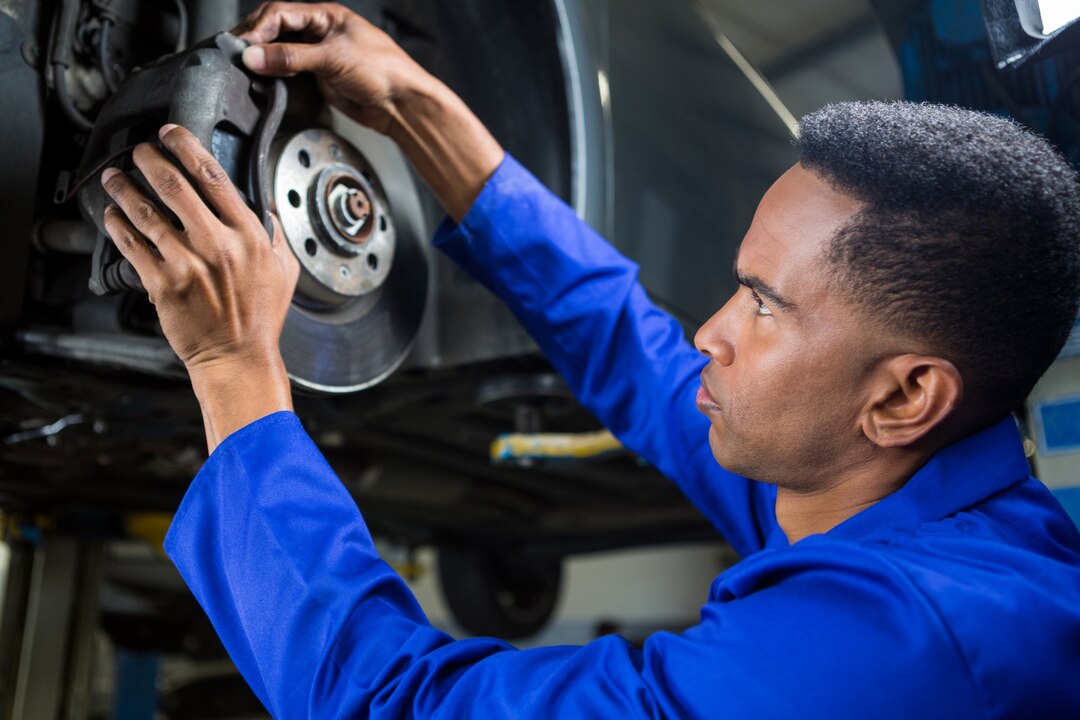The braking system is one of the most critical safety components in any vehicle, ensuring safe and controlled stops. Over time, wear and tear can affect the performance of your car’s braking system, potentially compromising your safety on the road. Recognizing the signs that your braking system needs replacement is essential for maintaining roadworthiness and preventing accidents. Here are ten signs to watch out for:
- Spongy Brake Pedal: If your brake pedal feels soft or spongy when pressed, it could indicate air in the brake lines or worn brake pads. A firm brake pedal is crucial for effective braking performance.
- Brake Warning Light: The brake warning light on your dashboard illuminating could indicate various issues, including low brake fluid levels, worn brake pads, or a malfunction in the braking system. Ignoring this warning light could lead to brake failure.
- Screeching or Grinding Noises: Unusual noises such as screeching or grinding when applying the brakes are clear indicators of worn brake pads or, in severe cases, metal-on-metal contact. Ignoring these noises can result in damage to brake rotors and reduced braking efficiency.
- Vibrations or Pulsations: If you feel vibrations or pulsations through the brake pedal or steering wheel when braking, it could be a sign of warped brake rotors. Warped rotors can lead to uneven braking and decreased stopping power.
- Pulling to One Side: If your vehicle pulls to one side when braking, it could indicate uneven brake pad wear, brake caliper issues, or a problem with the brake fluid distribution. Proper alignment and maintenance are essential to address this issue.
- Burning Smell: A burning smell while driving or after braking could suggest overheated brakes or clutch components. This could be due to aggressive driving, brake pad friction material overheating, or a malfunctioning braking system component.
- Delayed Braking Response: If there’s a noticeable delay between pressing the brake pedal and the vehicle slowing down, it could indicate worn brake pads, leaking brake fluid, or air in the brake lines. Prompt attention to this issue is crucial for safety.
- Fluid Leaks: Any signs of brake fluid leaks around the wheels or under the vehicle require immediate attention. Brake fluid leaks can lead to a loss of hydraulic pressure, resulting in brake failure.
- Uneven Wear on Brake Pads: Inspecting your brake pads regularly for uneven wear patterns can provide insight into the condition of your braking system. Uneven wear could indicate issues with brake calipers, brake hardware, or suspension components.
- High Mileage or Age: As a general rule, the braking system components, including brake pads, rotors, and brake lines, should be replaced periodically based on mileage or age. Consult your vehicle’s maintenance schedule for recommended replacement intervals.
Maintaining a properly functioning braking system is paramount for safe driving. By being vigilant for these ten signs indicating potential issues with your car’s braking system, you can address problems early and ensure your vehicle’s safety on the road. Remember to prioritize regular inspections and maintenance to keep your braking system in optimal condition and prevent costly repairs or accidents. Your safety and the safety of others on the road depend on it.











